|
Child angels - 2 |
|
|
Donatello is sometimes
credited with introducing spiritelli into renaiassance art. As we have
seen, they were around before Donatello, but Donatello transformed them
into something quite new. This is the font in the baptistery at Siena, dating from around 1417. The font itself was designed by Jacopo della Quercia, the sculptor who designed the tomb of Ilaria del Carretto we met on the previous page. Donatello's contribution was the musical spiritelli, shown in detail below. |
|
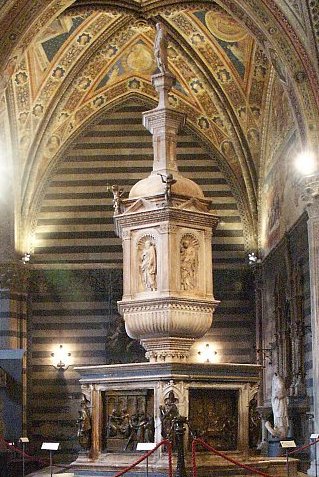 |
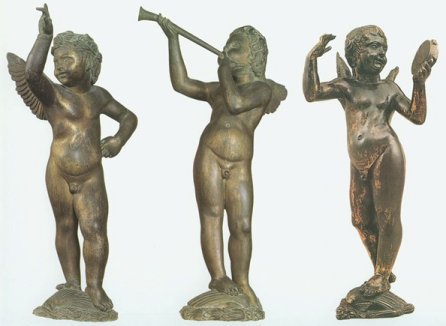 |
| Those rather bland little figures from the sarcophagi have suddenly come to life, dancing and playing instruments, moving the spiritelli away from a focus on death, and widening the religious context. 'Musical putti' by Donatello, here and in the Duomo in Florence, became a familiar component of religious art from here onwards. in 1439, Donatello completed his cantoria (choir gallery) for the Duomo in Florence. | |
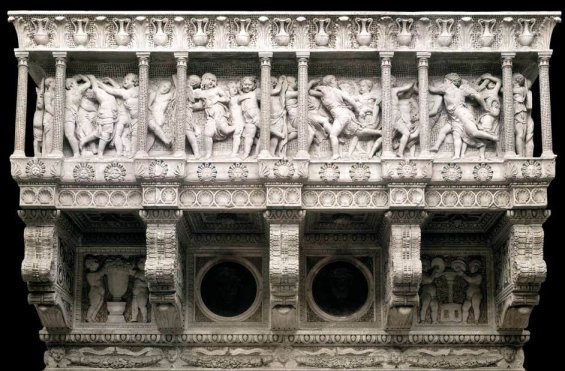 |
|
|
In 1435 the Spiritelli appeared on top of
an even more sacred subject. This is The Annunciation, on the Cavalcanti
altar, in Santa Croce,
Florence. |
|
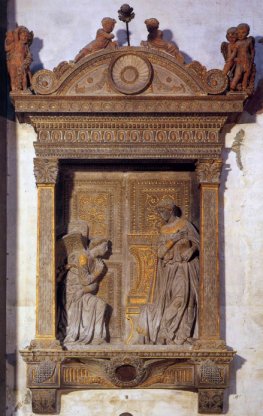 |
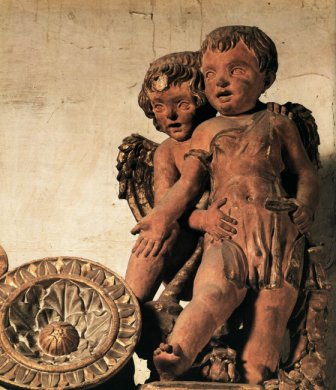 |
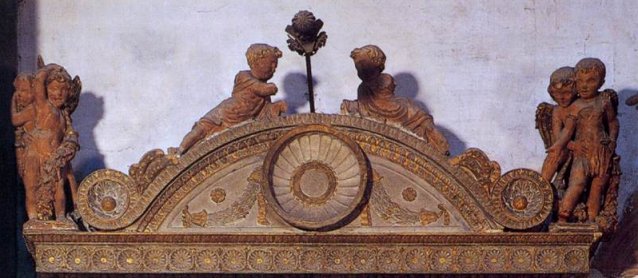 |
|
|
One more work by Donatello. We're now off to Padua, and the basilica of San Antonio. The row of musical angels running along the main altar date from 1447 - 1450. |
|
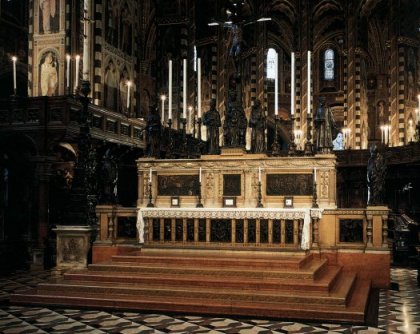 |
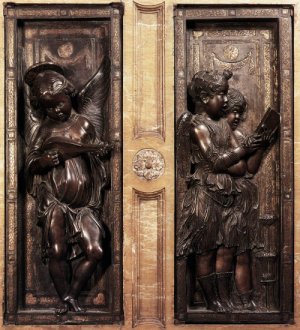 |
|
Significantly, Donatello's contract for this work does not use the word spiritelli, but Angeli. |
|
|
On to Page 3 and painting |
|
|
Angels page 1 |
|
|
|
|